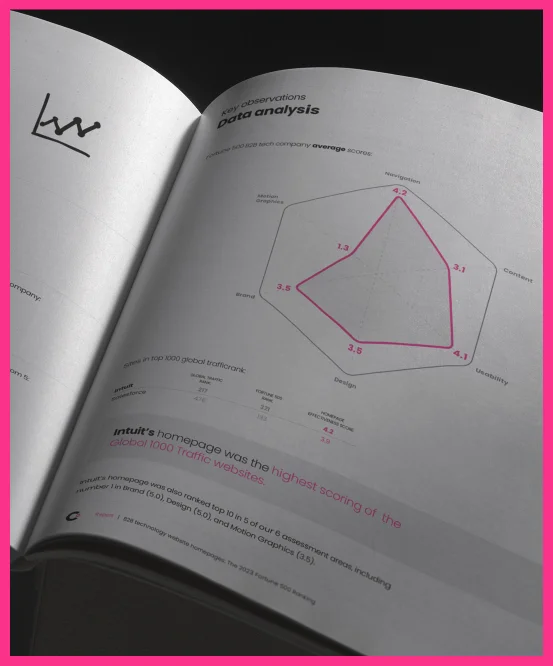We’ve all been there: The project is running behind, or over budget, or maybe things are going a bit off track. Tensions are high. Fingers are pointing. And the C-suite is asking, “How did this happen? It was all in the brief!”
Well, maybe that’s the problem.
The first step in any digital marketing project is usually putting together a creative brief – it’s how project teams and client stakeholders make sure everyone is (literally) on the same page. And in theory, it’s how the project stays on time, on track, and on budget. In reality, it doesn’t always work that way.
Digital marketing project management challenges
What starts out as excitement and enthusiasm for a new marketing project can quickly devolve into the chaos of fire drills. Whether they’re the result of misunderstandings about requirements, having aligned everyone around unrealistic goals, encountering technical difficulties, or trying to respond to conflicting direction or feedback, fire drills become the source of team frustration, schedule misses, and budget overruns. Everyone hates them, and no one knows how to get things back on track. It’s demoralizing for you and your agency partners.
According to a recent report, in 2018 only 70% of projects met their original goals or business intent, and only 60% were completed within the original budget. In fact, a Harvard Business Review survey found that the average IT project exceeds its budget by 27%, with one in six becoming a “black swan” – meaning it overruns budget by 200% and schedule by 70%.2 In the worst case scenario, a project is either given up on or canceled.
If organizations are clearly defining and agreeing to goals and parameters on paper before a project begins, why do so many become challenged, or worse, failed?
Many factors can contribute to a project going off the rails—poor management, shifting goal posts, and bad communication, to name a few. According to the Project Management Institute, the top causes of project failure are centered around lack of good planning.
1Project Management Institute, 2019: Success in Disruptive Times
1Harvard Business Review, 2011: Why Your IT Project May Be Riskier Than You Think
Source: Project Management Institute, 2019
One of the reasons B2B marketing projects go off track is that proposals and estimates are typically created by the people whose job it is to bring in business—agency owners, business-development teams, or sales folks. These roles tend to be focused on the numbers and are more risk and ambiguity tolerant.
The people executing the project, on the other hand, need certainty, and tend to avoid risk. These are the designers, content strategists, project managers, and programmers. When these two groups don’t see eye to eye, everyone can be in for a rocky ride.
To avoid these kinds of project challenges, you have to close the gap between estimation and execution. By aligning everyone from the outset on the same goals, expectations, and realities, you can better set your project up for success.
Introducing Clear Digital Velocity Workshop™
At Clear Digital, we’ve created a unique discovery process that does just that. At the beginning of each project, we hold a Velocity Workshop, which is like a live-action brief.
By nature, a workshop is much more effective than a written brief, because let’s be honest—how do you know if everyone is really reading the brief? Do they understand it? And how much information are they retaining? By holding a Velocity Workshop at the beginning of a project, we can make sure everyone is actually on the same page, and that the estimation is realistic on every level. It’s a smarter, faster way to get everyone aligned on both the approach and the requirements.
How a Velocity Workshop works
It’s pretty simple. We get everyone involved in the project into a room together. On the client side, this can include the CMO, director or VP of marketing, and any other relevant stakeholder. On the agency side, we bring the project manager, lead UX, lead developers, lead designer, and content team that will actually be working on the project. And then we start talking. We hammer out the details. And we visualize all the project components using every inch of our whiteboards and wall space, breaking down the elements so we can organize them easily.
Doing this in-person and getting the entire team involved really opens up the conversation and helps with understanding. Plus, we get to know each other, which always makes things run more smoothly.
When the project team and the client are in 100% alignment on what we know and what we don’t know, we roadmap it. This is where we bust out the colored cards, break the project down into essential elements, and put them together to create a clear, viable project roadmap from start to completion. Hours and estimates are adjusted or confirmed in complete transparency for budget validation—which means no more uncomfortable conversations about change orders or timelines when you’re in the thick of things.

Better process, better results
When everyone has a better understanding of the “why,” they also have a better understanding of the “what.” By kicking off projects with a Velocity Workshop, we close the gap between estimation and execution, empowering both our team and client stakeholders with a roadmap to success. Projects move faster and are less likely to run over budget or miss the scheduled launch. And all those fire drills, those become a thing of the past. Plus, hashing out the details face-to-face creates a personal dynamic that builds relationships, increases information intake, and reduces miscommunication. It all adds up to a better experience, and better outcomes, for everyone.






